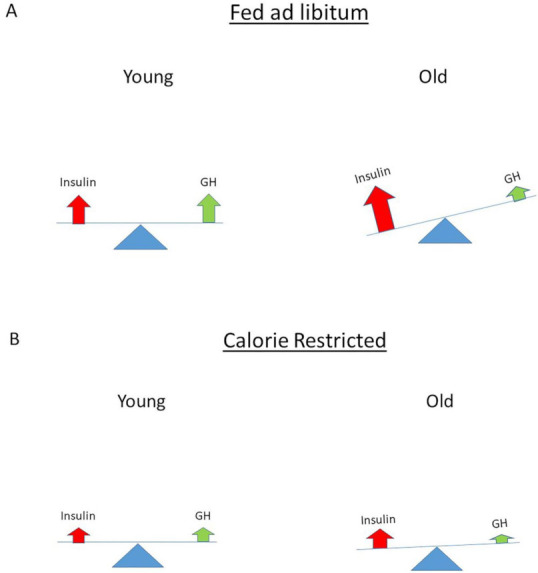Figure 6.

In the view of Parr, nutritionally driven “normal” insulin exposure is central to imbalance of the insulin–growth hormone axis (insulin–GH axis) [157,158]. (A) At young age there is balance in the insulin–GH axis. However, when there is (excessive) food intake ad libitum, a progressive imbalance develops in the insulin–GH axis with aging. This imbalance is the direct consequence of a food-induced increase in insulin secretion and the five-fold decline in GH secretion, which normally occurs between the age of 18 and 80. Due to the progressive imbalance in the insulin–GH axis with aging the decline in reserve capacity of cells and organ functions is accelerated. (B) Calorie restriction started at a young age will cause (a lifelong) lower insulin and GH secretion. As a consequence of calorie restriction, cumulative lifetime exposure to insulin at the same age will be less and lifespan will be extended by better maintaining the balance in the insulin–GH axis: this will result in long-term low (but functional) insulin levels and a high insulin receptor sensitivity (see text for more details).
